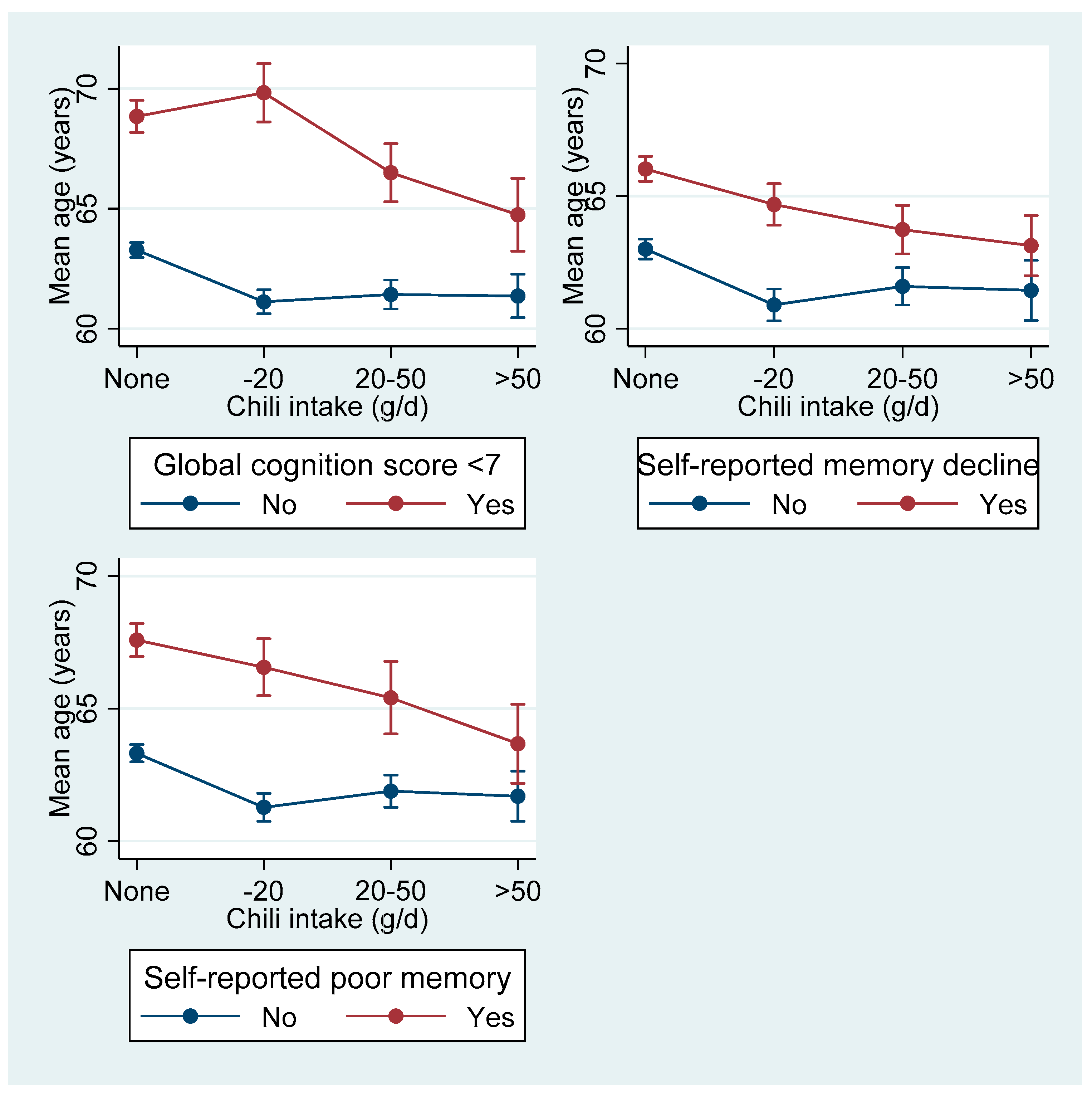Reply to “Comments on the Editor Re: Shi, Zumin, et al. High Chili Intake and Cognitive Function among 4582 Adults: An Open Cohort Study over 15 Years. Nutrients 11.5 (2019): 1183.”
Funding
Conflicts of Interest
References
- Wang, Y.; Wu, D. “Comments on the editor Re: Shi, Zumin, et al. High Chinli Intake and Cognitive Function among 4852 adults: An Open Cohort Study over 15 Years”. Nutrients 2019, in press. [Google Scholar]
- Shi, Z.; El-Obeid, T.; Riley, M.; Li, M.; Page, A.; Liu, J. High Chili Intake and Cognitive Function among 4582 Adults: An Open Cohort Study over 15 Years. Nutrients 2019, 11. [Google Scholar] [CrossRef] [PubMed]
- Pang, S.J.; Jia, S.S.; Man, Q.Q.; Song, S.; Li, Y.Q.; Song, P.K.; Zhao, W.H.; Zhang, J. Dietary Cholesterol in the Elderly Chinese Population: An Analysis of CNHS 2010–2012. Nutrients 2017, 9. [Google Scholar] [CrossRef]
- Yao, M.; McCrory, M.A.; Ma, G.; Tucker, K.L.; Gao, S.; Fuss, P.; Roberts, S.B. Relative influence of diet and physical activity on body composition in urban Chinese adults. Am. J. Clin. Nutr. 2003, 77, 1409–1416. [Google Scholar] [CrossRef] [PubMed][Green Version]

© 2019 by the authors. Licensee MDPI, Basel, Switzerland. This article is an open access article distributed under the terms and conditions of the Creative Commons Attribution (CC BY) license (http://creativecommons.org/licenses/by/4.0/).
Share and Cite
Shi, Z.; El-Obeid, T.; Riley, M.; Li, M.; Page, A.; Liu, J. Reply to “Comments on the Editor Re: Shi, Zumin, et al. High Chili Intake and Cognitive Function among 4582 Adults: An Open Cohort Study over 15 Years. Nutrients 11.5 (2019): 1183.”. Nutrients 2019, 11, 2882. https://doi.org/10.3390/nu11122882
Shi Z, El-Obeid T, Riley M, Li M, Page A, Liu J. Reply to “Comments on the Editor Re: Shi, Zumin, et al. High Chili Intake and Cognitive Function among 4582 Adults: An Open Cohort Study over 15 Years. Nutrients 11.5 (2019): 1183.”. Nutrients. 2019; 11(12):2882. https://doi.org/10.3390/nu11122882
Chicago/Turabian StyleShi, Zumin, Tahra El-Obeid, Malcolm Riley, Ming Li, Amanda Page, and Jianghong Liu. 2019. "Reply to “Comments on the Editor Re: Shi, Zumin, et al. High Chili Intake and Cognitive Function among 4582 Adults: An Open Cohort Study over 15 Years. Nutrients 11.5 (2019): 1183.”" Nutrients 11, no. 12: 2882. https://doi.org/10.3390/nu11122882
APA StyleShi, Z., El-Obeid, T., Riley, M., Li, M., Page, A., & Liu, J. (2019). Reply to “Comments on the Editor Re: Shi, Zumin, et al. High Chili Intake and Cognitive Function among 4582 Adults: An Open Cohort Study over 15 Years. Nutrients 11.5 (2019): 1183.”. Nutrients, 11(12), 2882. https://doi.org/10.3390/nu11122882







